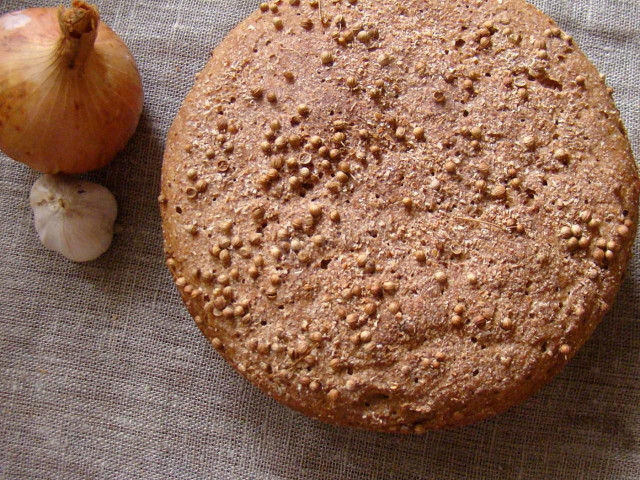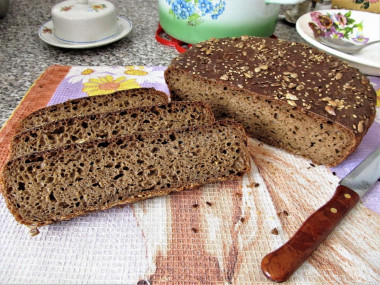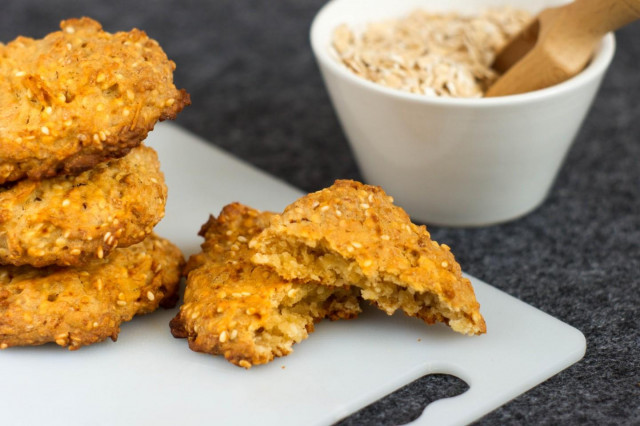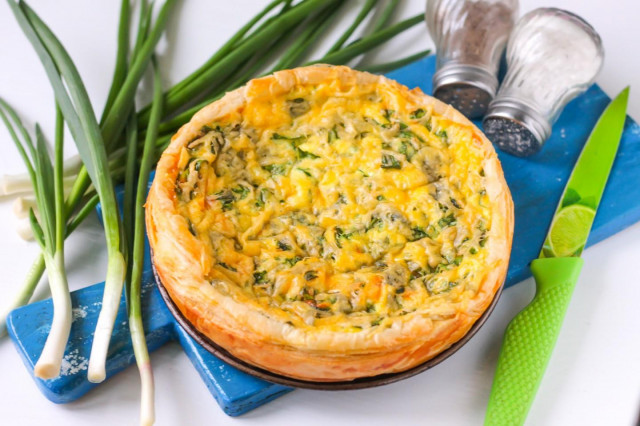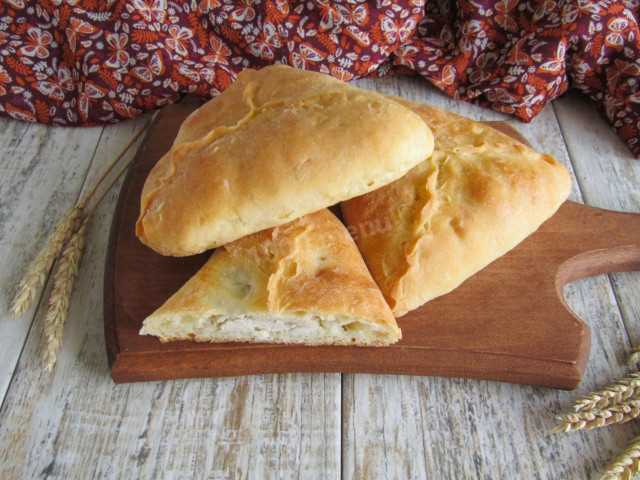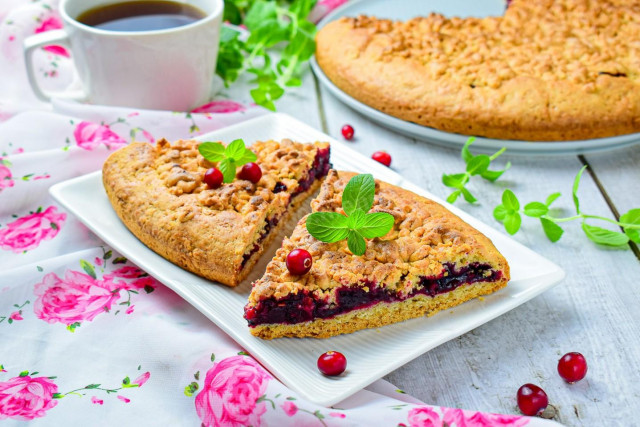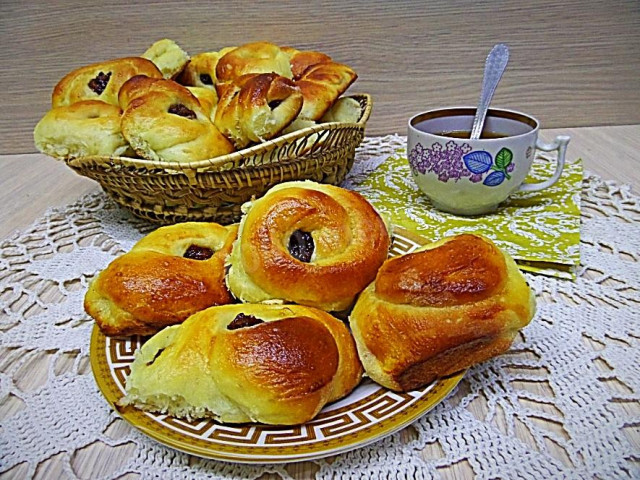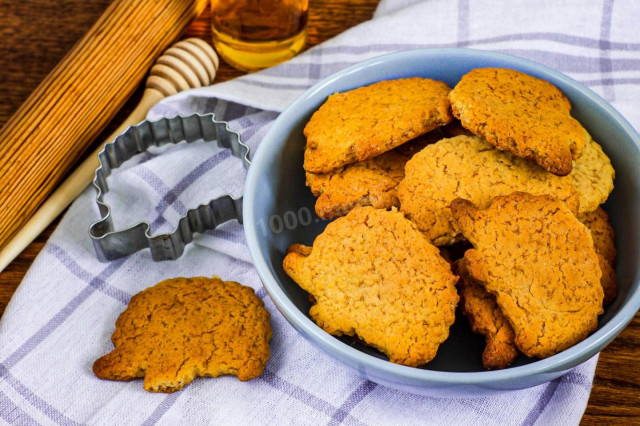Composition / ingredients
Step-by-step cooking
Step 1:
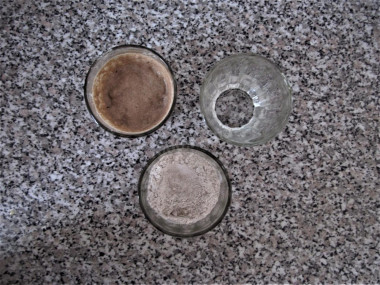
Ingredients to revive the starter (or starter).
Step 2:
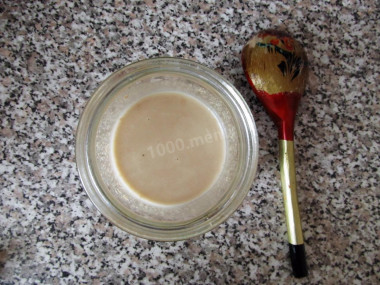
In a clean half-liter jar, we put aside 3 tablespoons.L. without the starter top (i.e. the starter, which we always keep in the refrigerator). Mix with water. It is advisable to use a wooden spoon.
Step 3:
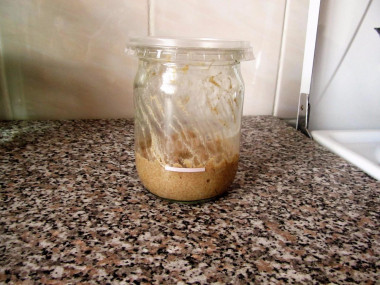
Then pour rye flour and mix until a homogeneous rather thick mass. Cover the jar loosely with a lid and leave the starter in the heat. The optimal temperature at which all processes take place is 25-26 degrees. If the temperature is lower, therefore, the processes take longer.
Step 4:
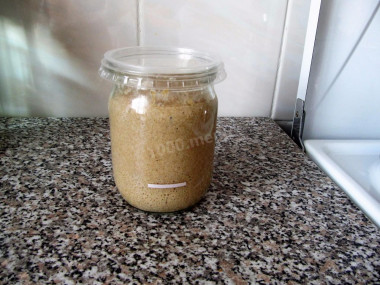
As time passed, the leaven increased more than 3 times. It took about 3.5 hours.
Step 5:
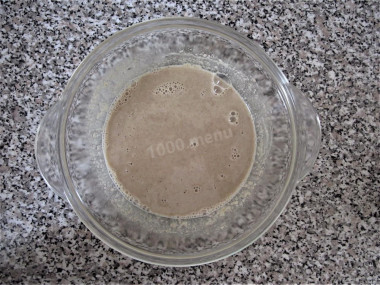
Making sourdough. We put the right amount of starter culture in a container where we will knead the dough, mix it with water.
Step 6:
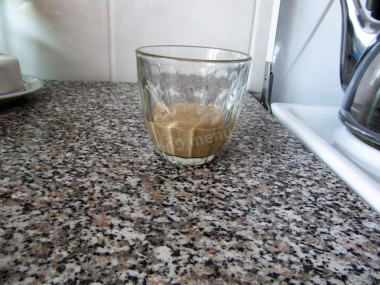
Put the rest of the starter culture into a clean glass, let it rise a little and put it in the refrigerator. This will be our starter for the next bread baking.
Step 7:
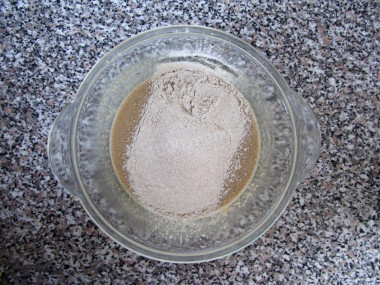
Add rye flour and mix until smooth.
Step 8:
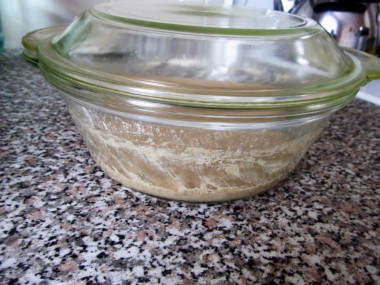
Cover the sponge with a lid and leave it warm until the volume increases 2-2.5 times.
Step 9:
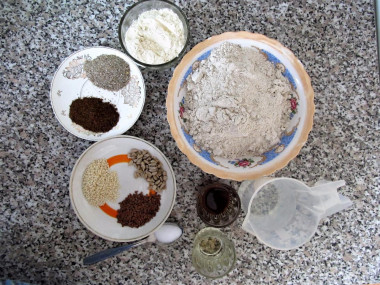
Ingredients for bread.
Step 10:
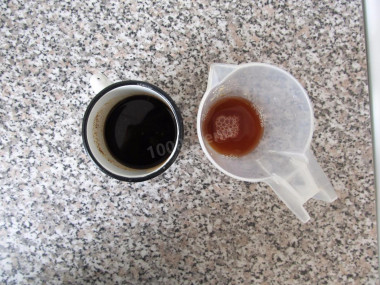
Brew malt in 50 ml of boiling water in advance, let it cool down. If the honey is thick, dissolve it in 50 ml of warm water.
Step 11:
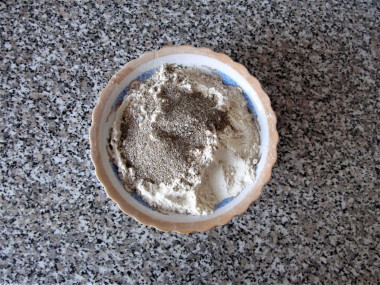
Sift rye and wheat flour, mix with bran.
Step 12:
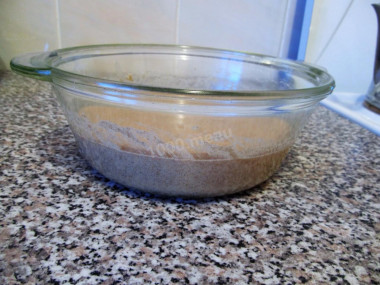
Sourdough rose in about 3.5 hours. Now we will knead the dough for bread.
Step 13:
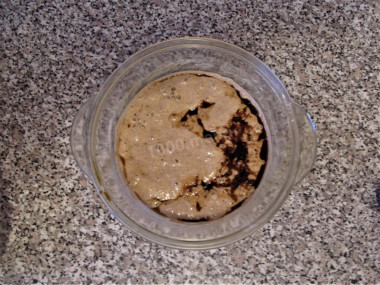
Add salt, malt, dissolved honey, remaining water (70 ml) to the brew, mix everything.
Step 14:
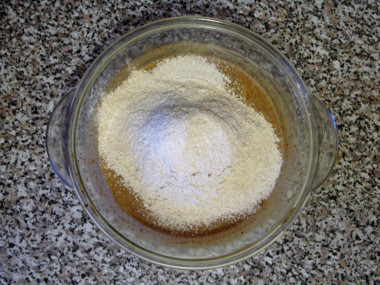
Pour in about half of the flour, mix.
Step 15:
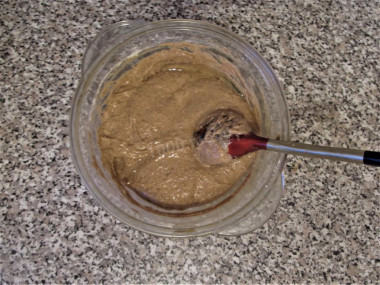
Add vegetable oil, mix.
Step 16:
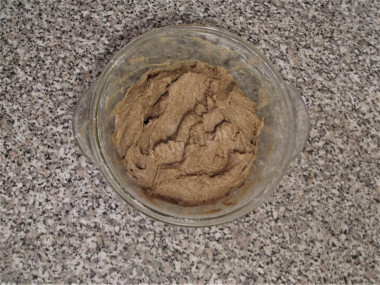
Pour in the remaining flour, knead a not too steep, sticky dough. Knead well until smooth.
Step 17:
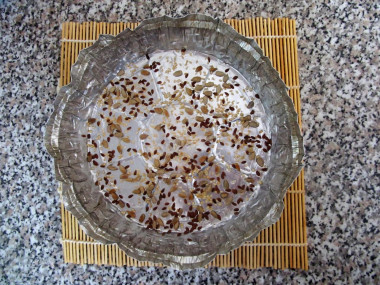
The baking dish is well lubricated with vegetable oil. If desired, various seeds (flax, sesame, sunflower) can be sprinkled on the bottom.
Step 18:
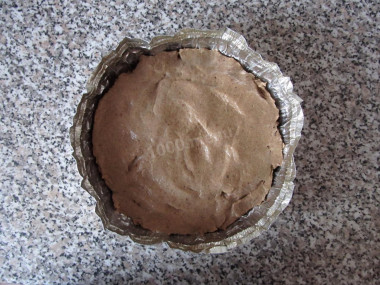
We spoon the dough into the mold, smooth it with wet hands. We cover it from above and leave it warm for lifting. You can sprinkle water on top and also sprinkle with seeds.
Step 19:
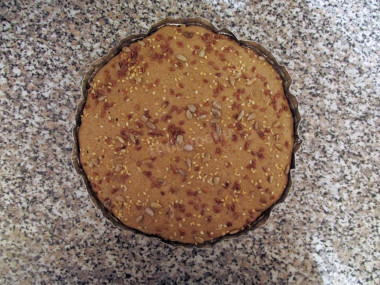
Here's our bread came up. The dough increased in volume 2-3 times in 3 hours. Small bubbles breaking through on the surface of the workpiece indicate that the bread is ready for baking. It is important not to overdo the bread, not to let it peroxide. We put the bread in preheated to 220 degrees. oven with steam (at the bottom of a bowl of water). After 10-15 minutes, we remove the steam and reduce the temperature to 190 degrees.
Step 20:
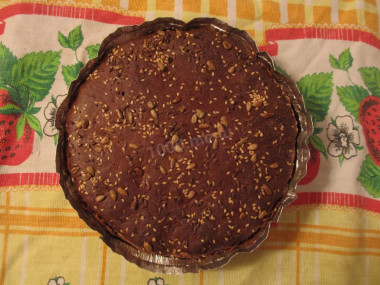
Bake until ready. Focus on your oven. It takes me a little over an hour. Baked bread immediately needs to be "washed". I spray from a spray bottle. Let it stand in the form for a while (10 minutes), then take it out, wrap it in a towel and leave to cool.
Step 21:
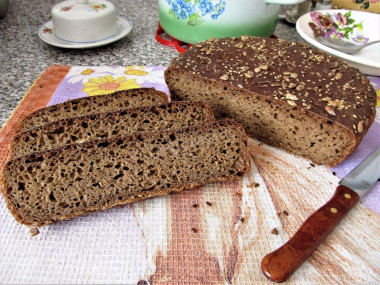
It is better to eat bread the next day, so it will "ripen" and will be even tastier. Enjoy your meal!
When kneading bread dough, the amount of flour (or water) can vary depending on what kind of crumb structure you want to get. If the dough is less steep, then the crumb will turn out more moist. You can experiment. You can also change the proportions of flour types. For example, part of the rye flour is replaced with buckwheat, then the bread will turn out with a pleasant buckwheat flavor. With this proportion, a bread bun of at least 500 grams is obtained.
Caloric content of the products possible in the composition of the dish
- Honey - 400 kcal/100g
- Vegetable oil - 873 kcal/100g
- Dried whole safflower seed kernels - 615 kcal/100g
- Sunflower seeds - 560 kcal/100g
- Dried whole sesame seeds - 563 kcal/100g
- Shelled sesame seed - 582 kcal/100g
- Salt - 0 kcal/100g
- Water - 0 kcal/100g
- Wheat flour - 325 kcal/100g
- Flax Seeds - 534 kcal/100g
- Rye flour - 305 kcal/100g
- Sourdough - 29 kcal/100g
- Bran - 165 kcal/100g
- Malt - 361 kcal/100g

